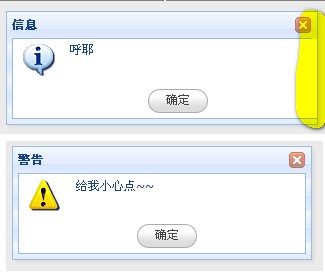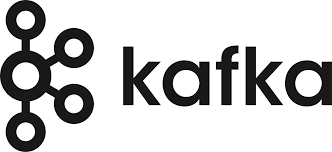本文主要介绍以下内容:
- 嵌入式模型简介。
- 使用
DocumentReader加载数据。 - 在
VectorStore中存储 Embedding。 - 实现 RAG(Retrieval-Augmented Generation,检索增强生成),又名 Prompt Stuffing。
你可以在 GitHub 中找到本文的示例代码
大型语言模型(LLM),如 OpenAI、Azure Open AI、Google Vertex 等,都是在大型数据集上训练出来的。但这些模型并不是在你的私人数据上训练出来的,因此它们可能无法回答你所在领域的特定问题。但是,在你的私人数据上训练模型可能既昂贵又耗时。那么,我们该如何使用这些 LLM 来回答我们领域的特定问题呢?
其中一种方法是使用 RAG(Retrieval-Augmented Generation,检索增强生成),又称 Prompt Stuffing (提示填充)。使用 RAG,从数据存储中检索相关文档,并将其传递给 LLM 以生成答案。在这一过程中,使用嵌入模型将文档转换为 Embedding,并将其存储到向量数据库中。
了解检索增强生成(RAG) {#了解检索增强生成rag}
你可能在关系数据库中存储结构化数据,在 NoSQL 数据库中存储非结构化数据,甚至在文件中存储结构化数据。你能够使用 SQL 有效地查询关系数据库,使用 NoSQL 数据库的查询语言有效地查询 NoSQL 数据库。你还可以使用 Elasticsearch、Solr 等全文搜索引擎来查询非结构化数据。
不过,你可能希望使用具有语义的自然语言检索数据。
例如,"我喜欢 Java 编程语言" 和 "Java 始终是我的首选语言" 具有相同的语义,但使用了不同的词语。尝试使用准确的词语检索数据可能不会有效。
这就是 Embedding 的作用所在。Embedding 是单词、句子或文档的向量表示。你可以通过这些 Embedding,使用自然语言检索数据。
你可以将结构化和非结构化数据转换为 Embedding,并将其存储在向量数据库中。然后,你可以使用自然语言查询向量数据库并检索相关数据。然后,你可以通过相关数据查询 AI 模型,以获得响应。
检索增强生成(RAG)是在生成响应之前,通过使用训练数据之外的额外知识库来优化 LLM 输出的过程。
Embedding API {#embedding-api}
Embedding API 可以将单词、句子、文档或图像转换为 Embedding 。Embedding 是单词、句子或文档的向量表示。
例如,单词 "Apple" 可以表示为一个向量 [0.1, 0.2, 0.3, 0.4, 0.5] 。一句 "I love Apple" 可以表示为一个向量 [0.1, 10.3, -10.2, 90.3, 2.4, -0.5]。
Spring AI 提供了一个 EmbeddingModel 接口,用于将文本或文档转换为 Embedding 。你可以使用任何受支持的 EmbeddingModel 实现,如 OpenAiEmbeddingModel、OllamaEmbeddingModel、AzureOpenAiEmbeddingModel、VertexAiEmbeddingModel 等。
根据要使用的实现,可以添加相应的依赖,并在 application.properties 文件中配置属性。
例如,如果要使用 OpenAI 的 EmbeddingModel,可以在 pom.xml 文件中添加以下依赖。
<dependency>
<groupId>org.springframework.ai</groupId>
<artifactId>spring-ai-openai-spring-boot-starter</artifactId>
<version>1.0.0-M1</version>
</dependency>
在 application.properties 文件中配置属性。
spring.ai.openai.api-key=${OPENAI_API_KEY}
# 你可以使用以下属性覆盖上述用于 embedding 的通用 api-key
spring.ai.openai.embedding.api-key=${OPENAI_API_KEY}
通过上述配置,你可以注入 EmbeddingModel 并将文本或文档转换为 Embedding,具体如下:
@Component
class MyComponent {
private final EmbeddingModel embeddingModel;
public MyComponent(EmbeddingModel embeddingModel) {
this.embeddingModel = embeddingModel;
}
public void convertTextToEmbedding() {
// 例 1:将文本转换为 Embedding
List<Double> embeddings1 = embeddingModel.embed("I like Spring Boot");
// 例 2:将文档转换为 Embedding
List<Double> embeddings2 = embeddingModel.embed(new Document("I like Spring Boot"));
// 例 3:使用选项将文本转换为 Embedding
EmbeddingRequest embeddingRequest =
new EmbeddingRequest(List.of("I like Spring Boot"),
OpenAiEmbeddingOptions.builder()
.withModel("text-davinci-003")
.build());
EmbeddingResponse embeddingResponse = embeddingModel.call(embeddingRequest);
List<Double> embeddings3 = embeddingResponse.getResult().getOutput();
}
}
向量数据库 {#向量数据库}
向量数据库(Vector Database)是一种存储 Embedding 的数据库。你可以在向量数据库中存储单词、句子或文档的 Embedding 。你可以通过向量数据库,使用自然语言查询 Embedding 信息,并检索相关数据。
矢量 和 向量 是一个东西,只是在不同领域里面用到的不同的称呼。矢量常常用在物理学中,向量在数学、几何中比较常见。
Spring AI 提供了一个 VectorStore 接口,用于存储和检索 Embedding 。目前,Spring AI 提供的 VectorStore 实现包括 SimpleVectorStore、ChromaVectorStore、Neo4jVectorStore、PgVectorStore、RedisVectorStore 等。
来看看如何使用 SimpleVectorStore 来存储和检索 Embedding。
@Configuration
class AppConfig {
@Bean
VectorStore vectorStore(EmbeddingModel embeddingModel) {
return new SimpleVectorStore(embeddingModel);
}
}
@Component
class MyComponent {
private final VectorStore vectorStore;
public MyComponent(VectorStore vectorStore) {
this.vectorStore = vectorStore;
}
public void storeAndRetrieveEmbeddings() {
// 存储 Embedding
List<Document> documents =
List.of(new Document("I like Spring Boot"),
new Document("I love Java programming language"));
vectorStore.add(documents);
// 检索 Embedding
SearchRequest query = SearchRequest.query("Spring Boot").withTopK(2);
List<Document> similarDocuments = vectorStore.similaritySearch(query);
String relevantData = similarDocuments.stream()
.map(Document::getContent)
.collect(Collectors.joining(System.lineSeparator()));
}
}
如上,我们将文档添加到 VectorStore,而 VectorStore 会使用 EmbeddingClient 在内部将文档转换为 Embedding,并将其存储到向量数据库中。
然后,使用自然语言查询 VectorStore 并检索相关数据。我们使用 withTopK() 方法指定了要返回的相似文档的最大数量。
DocumentReader 和 DocumentWriter {#documentreader-和-documentwriter}
在上例中,我们直接从字符串构建了一个 Document 实例来表示文本或文档。但在实际应用中,你可能希望从文件、数据库或任何其他来源读取文档。
Spring AI 提供了 DocumentReader 和 DocumentWriter 接口,用于从不同来源读写文档。
目前,Spring AI 提供了 JsonReader、TextReader、PagePdfDocumentReader 等 DocumentReader 实现。
VectorStore 接口继承了 DocumentWriter 接口,因此你可以将任何 VectorStore 实现用作 DocumentWriter。
来看看如何使用 TextReader 读取文本文档并将其存储到 VectorStore 中。
@Component
class MyComponent {
private final VectorStore vectorStore;
@Value("classpath:myfile.txt")
private Resource resource;
public MyComponent(VectorStore vectorStore) {
this.vectorStore = vectorStore;
}
public void storeEmbeddingsFromTextFile() {
var textReader = new TextReader(resource);
textReader.setCharset(Charset.defaultCharset());
List<Document> documents = textReader.get();
vectorStore.add(documents);
}
}
如上,从 classpath 文件中读取文本并将其存储在 VectorStore 中。
实现 RAG(检索增强生成) {#实现-rag检索增强生成}
在了解了如何将文档转换为 Embedding 并存储到向量数据库中,以及如何使用自然语言检索相关文档后,下面来看看如何实现 RAG。
@RestController
class RAGController {
private final ChatClient chatClient;
private final VectorStore vectorStore;
RAGController(ChatClient.Builder chatClientBuilder, VectorStore vectorStore) {
this.chatClient = chatClientBuilder.build();
this.vectorStore = vectorStore;
}
// 假设我们已经从包含人员信息的文件中读取了文件 并将其存储在 VectorStore 中,如上一节所述。
@GetMapping("/ai/rag/people")
Person chatWithRag(@RequestParam String name) {
// 使用自然语言查询 VectorStore,查找有关个人的信息。
List<Document> similarDocuments =
vectorStore.similaritySearch(SearchRequest.query(name).withTopK(2));
String information = similarDocuments.stream()
.map(Document::getContent)
.collect(Collectors.joining(System.lineSeparator()));
// 构建系统消息(systemMessage),指示 AI 模型使用传递的信息来回答问题。
var systemPromptTemplate = new SystemPromptTemplate("""
You are a helpful assistant.
Use the following information to answer the question:
{information}
""");
var systemMessage = systemPromptTemplate.createMessage(
Map.of("information", information));
// 使用 BeanOutputConverter 将响应解析为 Person 的实例。
var outputConverter = new BeanOutputConverter<>(Person.class);
// 构建用户信息(userMessage),要求 AI 模型介绍这个人。
PromptTemplate userMessagePromptTemplate = new PromptTemplate("""
Tell me about {name} as if current date is {current_date}.
{format}
""");
Map<String,Object> model = Map.of("name", name,
"current_date", LocalDate.now(),
"format", outputConverter.getFormat());
var userMessage = new UserMessage(userMessagePromptTemplate.create(model).getContents());
var prompt = new Prompt(List.of(systemMessage, userMessage));
var response = chatClient.prompt(prompt).call().content();
return outputConverter.convert(response);
}
}
record Person(String name,
String dateOfBirth,
int experienceInYears,
List<String> books) {
}
注释中包含对上述代码的解释。
总的来说,RAG 流程包括以下步骤:
- 使用
DocumentReader从不同来源加载文档。 - Convert the documents into embeddings using EmbeddingModel and store them in the VectorStore.
- 使用
EmbeddingModel将文件转换为 Embedding ,并将其存储在VectorStore中。 - 使用自然语言查询
VectorStore并检索相关文档。 - 构建
SystemMessage,指示 AI 模型使用传递的信息来回答问题。 - 构建
UserMessage,向人 AI 模型询问信息。 - 构建提示,并调用 AI 模型获取响应。
- 使用
OutputConverter将响应解析为所需格式。 - 返回响应。
总结 {#总结}
本文介绍了如何使用 Embedding API 将文本或文档转换为 Embedding ,以及如何使用向量数据库来存储和检索 Embedding 信息。最后,还实现了 RAG(检索增强生成),通过检索到的信息来使用 AI 模型回答问题。
Ref:https://www.sivalabs.in/spring-ai-rag-using-embedding-models-vector-databases/
 51工具盒子
51工具盒子




